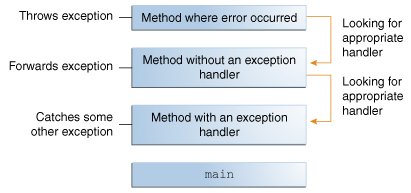
Thinkphp5的自定义异常处理及其底层实现
前言
在很多php的项目中,错误信息的输出返回都通过异常抛出的方式进行,特别是在后端校验过程中,或者后端处理过程中突然遇到需要中断程序执行的情况,相比返回['code' => 999, 'message' => 'error'],抛出异常无疑更简单明了 众所周知,php里边自定义异常处理函数需要用到内置方法 set_exception_handler,而在 Thinkphp5 中可以由开发者自定义异常处理类进行接管
正文
涉及到的配置参数及类
如果需要自定义异常处理,则需要在 app.php 中配置 exception_handle 参数 参数支持回调模式和自定义类,正如官方文档所说
1
2
3
4
5
6
7
8
9
10
11
12
13
| 'exception_handle' => function($e) {
if ($e instanceof \think\exception\ValidateException) {
return json($e->getError(), 422);
}
if ($e instanceof \think\exception\HttpException && request()->isAjax()) {
return response($e->getMessage(), $e->getStatusCode());
}
},
'exception_handle' => '\\app\\common\\exception\\Http',
|
自定义类需要继承 think\exception\Handle 并实现 render(),支持 return new Response() 直接向前端响应数据 比如在我的项目中,在 app/common/exception 下定义了 BaseException extends \think\Exception,以后不同模块的自定义异常类都会继承 BaseException,在自定义异常处理类中判断 $e instanceof BaseException 即可进行个性化处理 app/common/exception/BaseException.php
1
2
3
4
5
6
7
8
9
10
11
12
13
14
15
16
| <?php
namespace app\common\exception;
use think\Exception;
class BaseException extends Exception
{
}
|
在 app/common/exception/Http.php 中实现了控制器抛出的验证器异常和基于 BaseException 的异常,并统一格式输出和错误日志记录,在实际使用过程中就特别方便 app/common/exception/Http.php
1
2
3
4
5
6
7
8
9
10
11
12
13
14
15
16
17
18
19
20
21
22
23
24
25
26
27
28
29
30
31
32
33
34
35
36
37
38
39
40
41
42
43
44
45
46
47
48
49
50
51
52
53
54
55
56
| <?php
namespace app\common\exception;
use Exception;
use think\exception\ErrorException;
use think\exception\Handle;
use think\exception\ValidateException;
use think\facade\Log;
class Http extends Handle
{
public function render(Exception $e)
{
if ($e instanceof ValidateException) {
Log::info('Exception-Validate:' . $e->getMessage());
return json([
'code' => 888,
'message' => $e->getMessage(),
'data' => [],
]);
}
if ($e instanceof BaseException) {
Log::error('Exception-Logic:' . $e->getMessage());
return json([
'code' => $e->getCode() ?: 777,
'message' => $e->getMessage(),
'data' => [],
]);
}
if ($e instanceof ErrorException) {
Log::error('Exception-Error:' . $e->getMessage());
return json([
'code' => $e->getCode() ?: 666,
'message' => $e->getMessage(),
'data' => [],
]);
}
Log::error('Unknown-Error:' . $e->getMessage());
return json([
'code' => $e->getCode() ?: 555,
'message' => env('APP_DEBUG') ? $e->getMessage() : '系统错误',
'data' => []
]);
}
}
|
底层是如何实现的
首先,定位到 thinkphp/library/think/Error.php 错误处理类,在其 register() 中可看到对 php 的异常处理函数注册方法set_exception_handler 的调用
1
2
3
4
5
6
7
8
9
10
11
12
|
public static function register()
{
error_reporting(E_ALL);
set_error_handler([__CLASS__, 'appError']);
set_exception_handler([__CLASS__, 'appException']);
register_shutdown_function([__CLASS__, 'appShutdown']);
}
|
再顺着看 appException 方法,发现使用了 self::getExceptionHandler() 获取异常处理对象,对象是由变量 self::$exceptionHandler 决定的,默认 \\think\\exception\\Handle
1
2
3
4
5
6
7
8
9
10
11
12
13
14
15
16
17
18
19
20
21
22
23
24
25
26
27
28
29
30
31
|
public static function register()
{
error_reporting(E_ALL);
set_error_handler([__CLASS__, 'appError']);
set_exception_handler([__CLASS__, 'appException']);
register_shutdown_function([__CLASS__, 'appShutdown']);
}
public static function appException($e)
{
if (!$e instanceof \Exception) {
$e = new ThrowableError($e);
}
self::getExceptionHandler()->report($e);
if (PHP_SAPI == 'cli') {
self::getExceptionHandler()->renderForConsole(new ConsoleOutput, $e);
} else {
self::getExceptionHandler()->render($e)->send();
}
}
|
看到这里并没有看到 app.php 中的 exception.handler 如何发挥作用的,那么继续往下看,由于 self::$exceptionHandler 由 setExceptionHandler 决定,透过编辑器可以找到其调用方如下图所示:  在
在 thinkphp/library/think/App.php 的 initialize() 中,可看到如下所示代码
1
2
3
4
|
if ($this->config('app.exception_handle')) {
Error::setExceptionHandler($this->config('app.exception_handle'));
}
|
initialize() 是在应用启动时(执行 run())执行的初始化函数, public/index.php
1
2
3
4
5
6
7
8
9
10
11
| <?php
namespace think;
require __DIR__ . '/../thinkphp/base.php';
Container::get('app')->run()->send();
|
App.php
1
2
3
4
5
6
7
8
9
10
11
12
13
14
15
16
|
public function run()
{
try {
$this->initialize();
$this->hook->listen('app_init');
}
}
|
以及在同文件的 containerConfigUpdate() 中也能看到类似代码
1
2
3
4
5
6
| $config = $this->config->get();
if ($config['app']['exception_handle']) {
Error::setExceptionHandler($config['app']['exception_handle']);
}
|
这个函数可以顺着 initialize() -> init() -> containerConfigUpdate 找到,作用是对不同模块中的配置进行一次更新
1
2
3
4
5
6
7
8
9
10
11
12
13
14
15
16
17
18
19
20
21
22
| public function init($model)
{
$module = $module ? $module . DIRECTORY_SEPARATOR : '';
$path = $this->appPath . $module;
if (is_file($path . 'init.php')) {
include $path . 'init.php';
} elseif (is_file($this->runtimePath . $module . 'init.php')) {
include $this->runtimePath . $module . 'init.php';
} else {
}
$this->setModulePath($path);
if ($module) {
$this->containerConfigUpdate($module);
}
}
|
总结
php中使用 set_exception_handler 处理异常,而Thinkphp5中可在 app.php 中自定义 excpetion_handler 处理类的方式统一方便的处理异常

 在
在